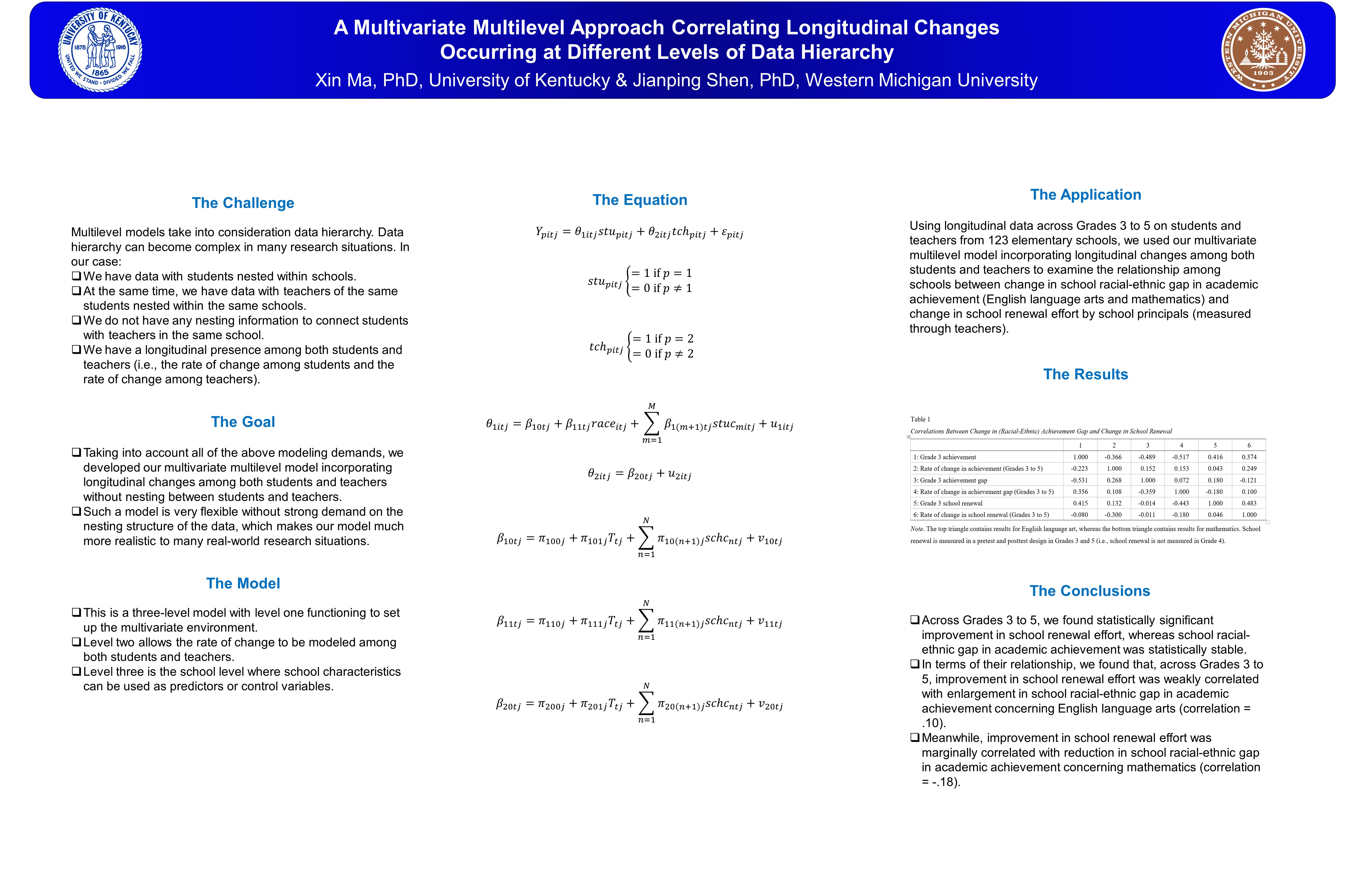A Multivariate Multilevel Approach Correlating Longitudinal Changes Occurring at Different Levels of Data Hierarchy
Conference
64th ISI World Statistics Congress - Ottawa, Canada
Format: CPS Poster
Keywords: assessment, modelling
Session: CPS Posters-01
Monday 17 July 4 p.m. - 5:20 p.m. (Canada/Eastern)

Abstract
Statistical Advancement. Multilevel models take into consideration data hierarchy. Data hierarchy can become complex in many research situations. In our case, we have data with students nested within schools, and at the same time, we have data with teachers of the same students nested within the same schools. However, we do not have any nesting information to connect students with teachers in the same school. We are asked to correlate certain longitudinal change among students with certain longitudinal change among teachers. This research purpose is quite challenging. Without any link between students and teachers, it is quite tempting to use the univariate approach to calculate changes among students and teachers separately for each school, and then use simple correlation to address the research purpose. This univariate approach is obviously flawed by considering students and teachers independently in isolation of each other. We take a multivariate multilevel approach to situate our data in the correct statistical model, but we face the challenge of lacking linkage between students and teachers in the model. Meanwhile, we have a longitudinal presence among both students and teachers (i.e., the rate of change among students and the rate of change among teachers). Taking into account all of these modeling demands, we developed our multivariate multilevel model incorporating longitudinal changes among both students and teachers without nesting between students and teachers. Such a model is very flexible without strong demand on the nesting structure of the data, which makes our model much more realistic to many real-world research situations. Specifically, this is a three-level model with level one functioning to set up the multivariate environment, level two allowing the rate of change to be modeled among both students and teachers, and level three as the school level where school characteristics can be used as predictors or control variables. Finally, this model does take into account errors among students, teachers, and schools, as highly desired.
Practical Application. Using longitudinal data across Grades 3 to 5 on students and teachers from 123 elementary schools, we used our multivariate multilevel model incorporating longitudinal changes among both students and teachers to examine the relationship among schools between change in school racial-ethnic gap in academic achievement (English language arts and mathematics) and change in school renewal effort by school principals (measured through teachers). Across Grades 3 to 5, we found statistically significant improvement in school renewal effort, whereas school racial-ethnic gap in academic achievement was statistically stable. In terms of their relationship, we found that, across Grades 3 to 5, improvement in school renewal effort was weakly correlated with enlargement in school racial-ethnic gap in academic achievement concerning English language arts (correlation = .10). Meanwhile, improvement in school renewal effort was marginally correlated with reduction in school racial-ethnic gap in academic achievement concerning mathematics (correlation = -.18).
